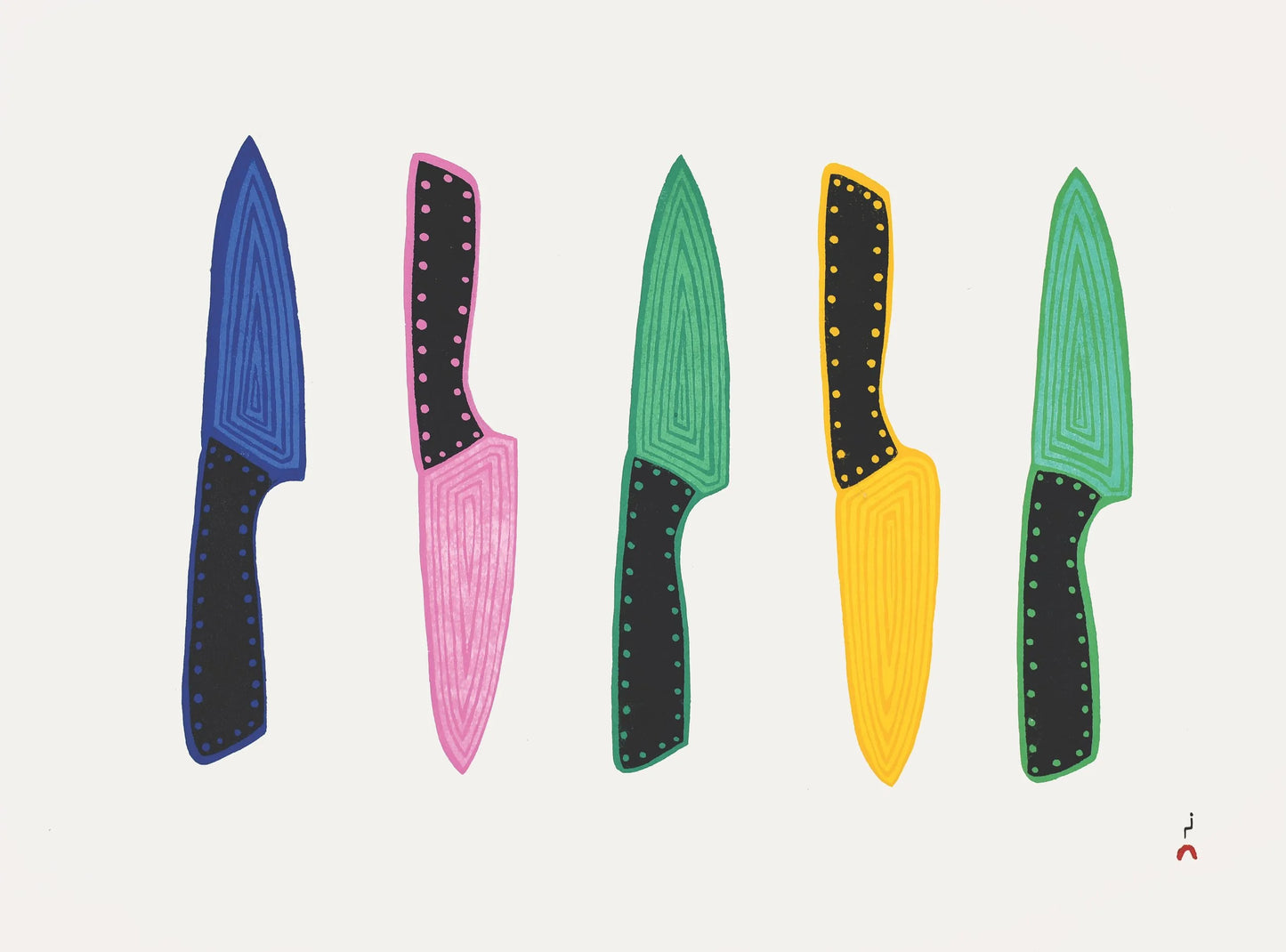Ornamental Knives
Ornamental Knives
Couldn't load pickup availability
Description
Susie Saila
ORNAMENTAL KNIVES, 2023
Stonecut
43.2 x 59.6 cm
Dorset ID# 23-29
Stonecut is an elegant process and Cape Dorset printmakers have refined it to a fine art. The first step is tracing the original drawing and applying it to the smooth surface of the prepared stone. Using india ink, the stonecutter delineates the drawing on the stone and then cuts away the areas that are not to appear in print, leaving the uncut areas raised, or in relief. The raised area is inked using rollers and then a thin sheet of paper - usually fine, handmade Japanese paper - is placed over the inked surface. A protective sheet of tissue is placed over this sheet, and the paper is pressed gently against the stone by hand with a small, padded disc. Only one print can be pulled from each inking of the stone, so the edition takes time and patience and care.
The West Baffin Eskimo Co-operative in Cape Dorset has earned a worldwide reputation for the quality and originality of limited edition prints made by its member artists. Every year since 1959 the print making studios (now known as Kinngait Studios) have released an annual catalogued collection of between 30 and 60 images as well as numerous commissions and special releases. Kinngait Studios is the longest continuous running print studio in Canada.
Although the graphic abilities of many Inuit were recognized early on from incised ornaments and tools as well as appliqued garments and bags, very little works on paper were done prior to the inception of the print making program in the late 1950’s.
Much of the success of the formative years of printmaking in Cape Dorset can be attributed to James Houston, an artist from Toronto who left the cosmopolitan south with his wife Alma and their two young sons in 1952 and lived the better part of the next 10 years in Cape Dorset. Apparently James Houston was a heavy smoker and one day Oshweetok Ipeelie, a skilled hunter and carver of walrus tusks, picked up an empty cigarette package and remarked upon the supreme patience and skill of the man who drew with painstaking precision the identical image of a sailor on each and every pack. Houston tried to explain how multiple images are made and then began to demonstrate the fundamental principles of printmaking by rubbing soot over an incised walrus tusk. He then pressed a few sheets of toilet paper over the image and pulled a few simple prints whereupon Ipeelie amazed and delighted exclaimed, “We can do that.” Thus began a quest to find a genuine, indigenous and appropriate means of printmaking.
Although several small editions of sealskin stencils were produced it was a cumbersome and limiting process. However it was discovered that the local carving stone used for sculpture was an ideal medium for relief printing and eventually the stone cut technique became the most common media of printmaking in Cape Dorset. Later on the technique of engraving was introduced and in the 1970’s the first litho press was set up. In recent times, stone cuts, etchings and lithographs have comprised the mediums of each collection thus allowing the artists a greater variety of expression.
Shipping & Returns
Free shipping in Canada for orders over $75. International shipping available. Return/exchanges are accepted within 30 days of purchase. Some conditions apply.
View full details


